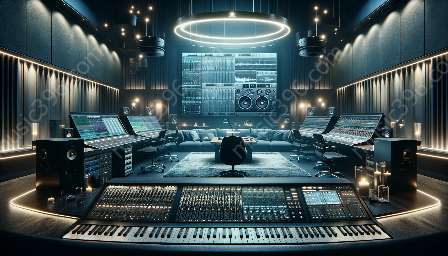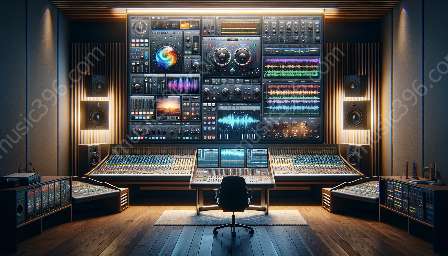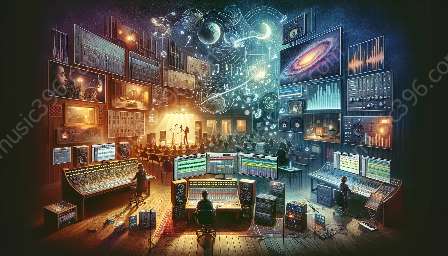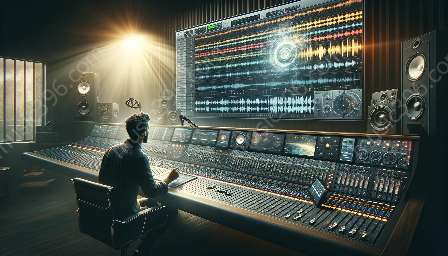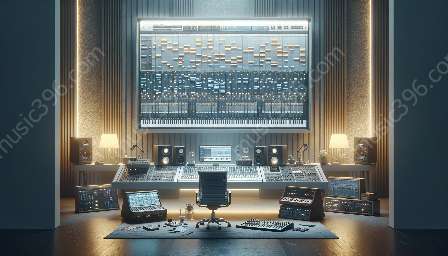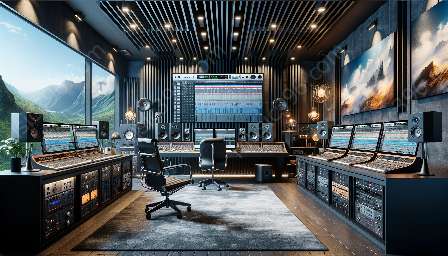Digital Signal Processing (DSP) plays a crucial role in sound design, especially when using Digital Audio Workstations (DAWs) for music production. DAWs harness the power of DSP to manipulate and enhance audio, allowing for unparalleled creativity and quality in sound design.
Understanding DSP in Sound Design
Digital Signal Processing (DSP) involves the manipulation of audio signals using digital techniques. In the context of sound design in DAWs, DSP includes a wide range of processes such as filtering, equalization, compression, reverb, delay, modulation, and more. These processes are essential for shaping and refining audio to achieve the desired sonic characteristics.
By utilizing digital techniques, DSP in sound design offers a level of precision and control that was previously unattainable with analog methods. DAWs leverage DSP to provide a diverse set of tools and effects, empowering audio professionals and musicians to craft immersive and captivating sonic experiences.
Key Elements of DSP in DAW Sound Design
When working with DAWs, various elements of DSP contribute to the overall sound design process:
- Real-time Processing: DAWs utilize real-time DSP to apply effects and modifications to audio signals instantaneously. This allows for seamless experimentation and creative exploration during the production process.
- Signal Manipulation: DSP in DAWs enables precise manipulation of audio signals, including adjusting frequency content, dynamic range, stereo imaging, and spatial characteristics. These capabilities are essential for sculpting soundscapes and enhancing the emotional impact of music.
- Modular Signal Chain: DAWs offer a modular approach to signal processing, allowing users to create complex signal chains by chaining together multiple DSP components such as EQs, compressors, and reverbs. This modular flexibility facilitates the creation of unique audio processing workflows tailored to specific sound design requirements.
Enhancing Creativity and Quality with DSP
Sound designers and music producers rely on DSP within DAWs to push the boundaries of creativity and achieve high-quality results. Here's how DSP contributes to enhancing creativity and quality:
- Unlimited Sound Manipulation: DSP empowers users to experiment with an extensive array of sound manipulation techniques, from subtle enhancements to radical transformations. This level of flexibility allows for the creation of distinctive sounds that define an artist's unique sonic identity.
- Customizable Effects: DAWs offer customizable DSP effects that can be tailored to specific sonic goals. Whether it's designing unconventional reverbs or crafting intricate delay patterns, the customizable nature of DSP effects fosters innovation and originality in sound design.
- High-Fidelity Audio Processing: DSP in DAWs ensures high-fidelity audio processing, minimizing degradation and artifacts during signal manipulation. This commitment to audio quality is essential for delivering professional and polished productions across various musical genres.
Integration of Advanced DSP Techniques
As technology advances, DAWs continue to integrate advanced DSP techniques to meet the evolving demands of sound design:
- Convolution Reverb: DAWs incorporate convolution reverb, a DSP technique that simulates the reverberation of real spaces by convolving audio with impulse responses. This technology enables sound designers to recreate authentic acoustic environments and add depth to their productions.
- Complex Modulation Engines: Advanced DAWs feature complex modulation engines powered by DSP, allowing for intricate modulation effects such as flanging, phasing, and chorusing. These dynamic modulation capabilities contribute to the richness and complexity of sound design.
- AI-Assisted DSP: Some modern DAWs leverage AI-assisted DSP to automate certain aspects of sound design, offering intelligent processing solutions that augment creative workflows and streamline production tasks.
Conclusion
The pivotal role of Digital Signal Processing in sound design using DAWs underscores its significance in shaping the landscape of modern music production. By harnessing the power of DSP, DAW users can unleash their creative potential and achieve unparalleled sonic innovation and excellence.

